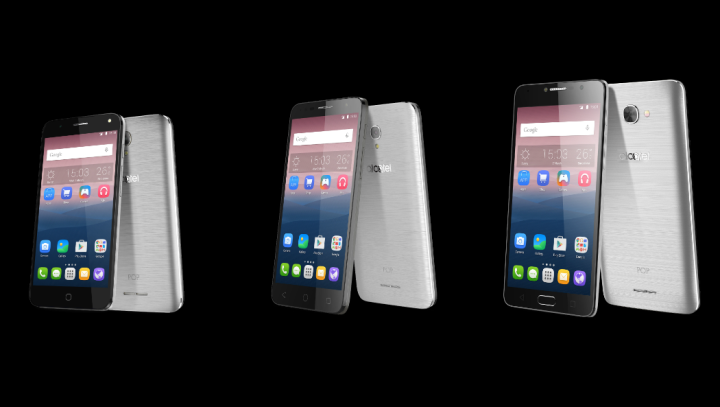

And what exactly makes it so ideal for millennials? The customizable backs that make it “designed by you, inside and out” — something which has been done by established players like Nokia, Motorola, and even newcomers like OnePlus.

The three versions of the device are the Pop 4, the Pop 4+, and the Pop 4S. They all share a similar build, but each have a different style for how the navigation buttons look. For example, the Pop 4S has a physical home button that quite resembles the Samsung Galaxy S6, and that’s because it has a fingerprint scanner. It’s flanked by two capacitive buttons on both sides. They all run Android 6.0 Marshmallow.
You’ll be able to customize the backs on all the devices in the Pop 4 series, with wood, leather, hairline-brushed design styles, and even an oddly named “Baby Skin” option, which mostly seems to be a smooth plastic back cover. The backs come in a range of colors as well.
The Pop 4S is the cream of the crop in this new series, with 13-megapixel rear camera, and an 5-megapixel front-facing one, a 5.5-inch 1080p IPS display, and 2,960mAh battery. It’s powered by an octa-core Mediatek processor, with 2GB of RAM and internal storage starting at 16GB, which you can expand up to 64GB with a MicroSD card. It features a fingerprint sensor on the home button, NFC, and fast-charging as well.
As a whole series, the devices felt pretty decent, though not at all flagship quality — that’s the Idol 4 series. These are budget phones, and they feel exactly like that.
Then comes the Pop 4+, which is essentially the larger variant of the Pop 4, but it’s still the same size as the Pop 4S at 5.5-inches. Unfortunately, with such big screen real estate, the company has opted for a 720p IPS display, meaning the screen won’t look quite crisp. It’s powered by the quad-core Snapdragon 210, has 1.5GB of RAM, and 16GB of internal storage. It does have a MicroSD as well, with additional storage capacity up to 32GB.
The Pop4+ also has a 2,500mAh battery, 8-megapixel rear camera, and a 5-megapixel front facing one, which also has wide-viewing angles for selfies.
These are budget phones, and they feel exactly like that.
Finally, the Pop 4 is a 5-inch device with a 720p IPS display. It’s powered by the same Snapdragon 210 processor as the Pop 4+, but it only has 1GB of RAM, and a measly 8GB of internal storage. The Pop 4 also features the same camera specs as the Pop 4+, and strangely, the same battery capacity. You would think the 5.5-inch device would require a little more juice to power its screen, but we’ll have to see how it holds up when we get a unit to review.
The latter two devices do not have NFC, fast-charging, or fingerprint scanners, and they’re clearly the more compromise-heavy budget devices, compared to the Pop 4S and the Idol 4 and 4S smartphones.
The Pop 4S will cost 199 euros, the Pop 4+ will cost 149 euros, and the Pop 4 will be priced at 129 euros. The company hasn’t confirmed when the devices will be available.


